|
KARL
SIMS
http://www.?
Intelligent
virtual environments
A number of new research efforts are emerging that will allow the
development of intelligent virtual environments and greatly enhance
the experience of telepresence. One major area of research aims
to make virtual environments more dynamic and to enable virtual
objects to interact with each other. This is the context of Karl
Sims’ work to create computer-generated spaces in which virtual
elements evolve on their own in accordance with pre-established
rules: one example is a landscape in which plants appear and grow
spontaneously. A similar direction is being explored by Mike McKenna
and colleagues at the Massachusetts Institute of Technology, who
are doing research into images of behavioural patterns. Lastly,
it is worth mentioning the work of Susan Amkraut and Michael Girard
on the animation and simulation of the movements of articulated
animals. For example, in Eurythmy, a set of complex algorithms enable
birds in flight to cluster together and move individually in reaction
to the movements of their fellow creatures. In Menagerie, as soon
as a user moves into the virtual space, virtual animals respond
to him in real time.
| |
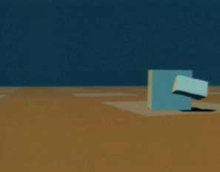 |
| |
|
 |
1995, Evolved
Creatures |
| |
|
| |
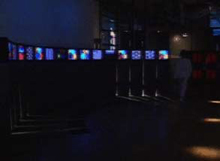 |
| |
|
| |
1993, Genetic
Images |
| |
|
| |
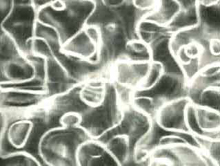 |
| |
|
| |
1991, Primordial
Dance |
| |
|
| |
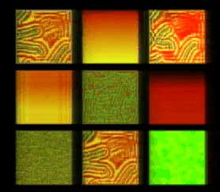 |
| |
|
| |
1991, Interactive
Evolution of Dynamical System |
| |
|
| |
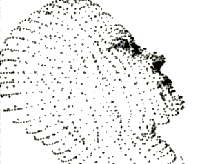 |
| |
|
| |
1988, Particle
Dreams |
1995,
Evolved Creatures
These Creatures,
modeled according to behavioural rules, call on research projects
on learnig patterns and artificial life. Here, the cretures are
learning to walk.
1993,
Genetic Images
The computer presents the visitor with sixteen pictures which are
very simple at first. The computer then removes all those that are
not selected by the viewer and generates new pictures which are
offspring with mutations and combinations from the ones selected
by the viewer. Massively parallel computations allows a new dimension
of computing speed, adding more processors that can work all together.
And this in turn allows new and different kind of algorithms and
interactive process to be tried out that could not previously be
performed.
1991,
Primordial Dance
The computer
introduces random modifications to the equations which generate
the forms, but it is the operator aesthetic criteria that control
theevolution of the image from one generation to the next.
1991,
Interactive Evolution of Dynamical Systems
The computer
displays nine populations of images, some of which, after selection,
can undergo complex trasformations, thanks to equations employes.
Based on the evolution of networks of cellular automations, the
emergence of new behaviour patterns in dynamical systems of ever
greater complexity is evaluated here by interactive methods.
1988,
Particle Dreams
The appearance
and behaviour of different particle systems are controlled by giving
each particle its own virtual processor within the supercomputer.
In this way, systems like these can account for complex physical
phenomena, such as fluxes, in realistic or system-enhanced ways.
In the figure below the image of a three dimensional face made up
of particles decomposes and is recomposed according to predetermined
physical laws.
|





